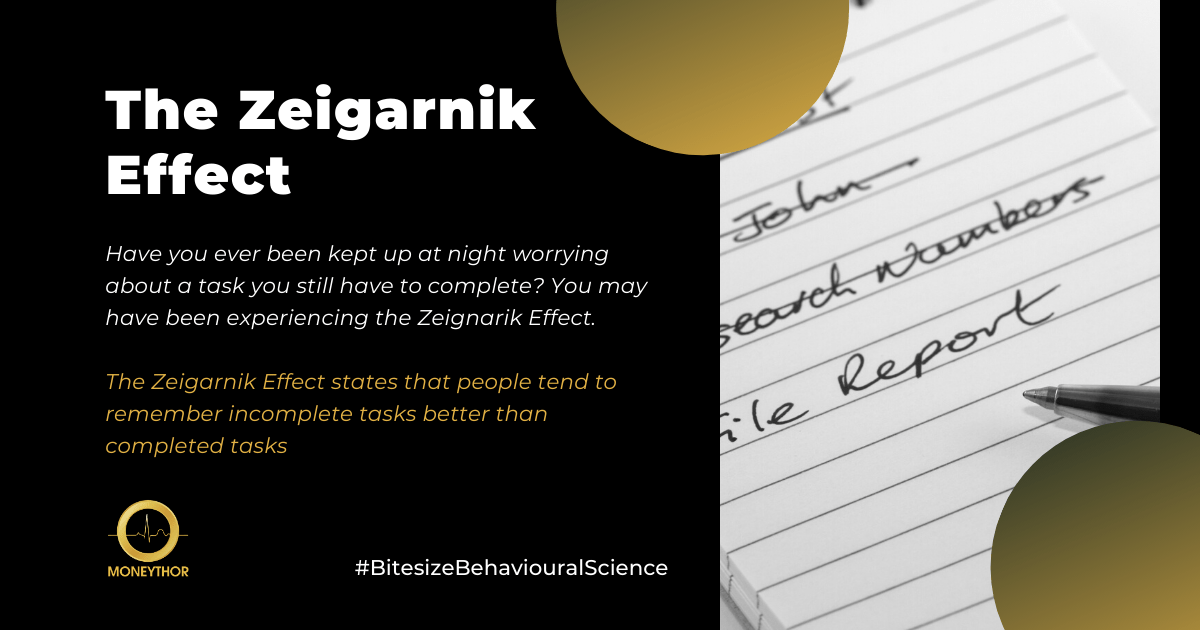Have you ever been kept up at night worrying about a task you still have to complete? Yet even after all those sleepless nights, once the task is completed you never think about it again. You may have been experiencing the “Zeigarnik effect”.
The effect was first discovered by Bluma Zeigarnik in the 1920’s. While sitting in a café in Berlin, she noticed that waiters had much better recall of orders before the order was completed. Once the food was delivered and the cheque paid, the level of recall dropped significantly. From this simple observation came many studies which have proven that people have a much greater recall of uncompleted tasks compared to completed tasks. This is because people spend more time thinking about incomplete tasks than ones they have already finished.
Some of the key implications of these findings included:
- People have better memory recall of incomplete tasks
- Once a task has started people are less likely to procrastinate.
Memory Recall
People remember more details of a task before they complete it. This suggests that it is best to deliver content and information to customers in segments so that they keep consuming information.
Procrastination
The Zeigarnik effect is closely related with procrastination and can be used as a tool to help people stay motivated. The effect suggests that the key to overcoming procrastination is to just get started with a task. No matter how large or small the first step is, once you start you are less likely to give up. The thought of the task being incomplete will keep you motivated to finish it as it will stay fresh in your mind.
How does this impact financial decisions?
The Zeigarnik effect can have a big impact on financial decisions and the effort people make in managing their financial lives. Based on the two main implications of the effect listed above, it is known to stop people from procrastinating and at the same time encourage them to expands their ability to take in information.
When implementing customer journeys, financial firms can use the Zeigarnik effect to help their customers in many ways including:
- Simple first step
Whatever the task you need your customer to complete, whether it be applying for a loan or starting a savings account, the first step in the process should be simple like selecting a loan type or choosing a savings goal. Once a customer has made this first step it will be the motivation for them to continue until they complete their task e.g., finish the loan application or reach their savings goal.
- Digestible content
Create digestible content that customers can move through at their own pace. Split content across pages or sections so that it is clear that there is more content to consume and that until they have gone through the various sections or pages the task will not be complete. This is particularly useful when getting customers to read financial literacy advice pieces or terms and conditions for financial products and services.
- Progress overview
Whether it is a savings goal or loan application, provide a clear progress overview at every point. Select the tracking system that works best for you and have it clearly displayed within your digital channel so that customers always know that they still have tasks to complete and how far along they are.
- Reminders
Notifications and alerts at various milestones during the completion of a task can be hugely beneficial in keeping customers motivated. These simple messages can force customers to think about their uncompleted tasks and encourage continue working on them. This is particularly relevant for continued saving and investing.
The Zeigarnik effect suggests that any action towards achieving your goal is enough motivation to ensure you complete it. One simple step can be the catalyst to towards change. Consider the Zeigarnik effect when building out financial wellness journeys or promoting products and services and build experiences that motivate customers and keep them on track.

